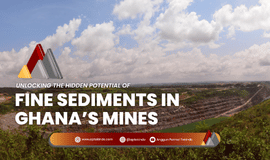Every open-pit mine faces a major challenge: slope stability. A slope that fails to withstand its load can block haul roads, halt production, damage heavy equipment, and even endanger workers’ lives. That’s why slope stability analysis is not just a formality—it is the key to operational continuity.
Structural Data: The Foundation of Analysis
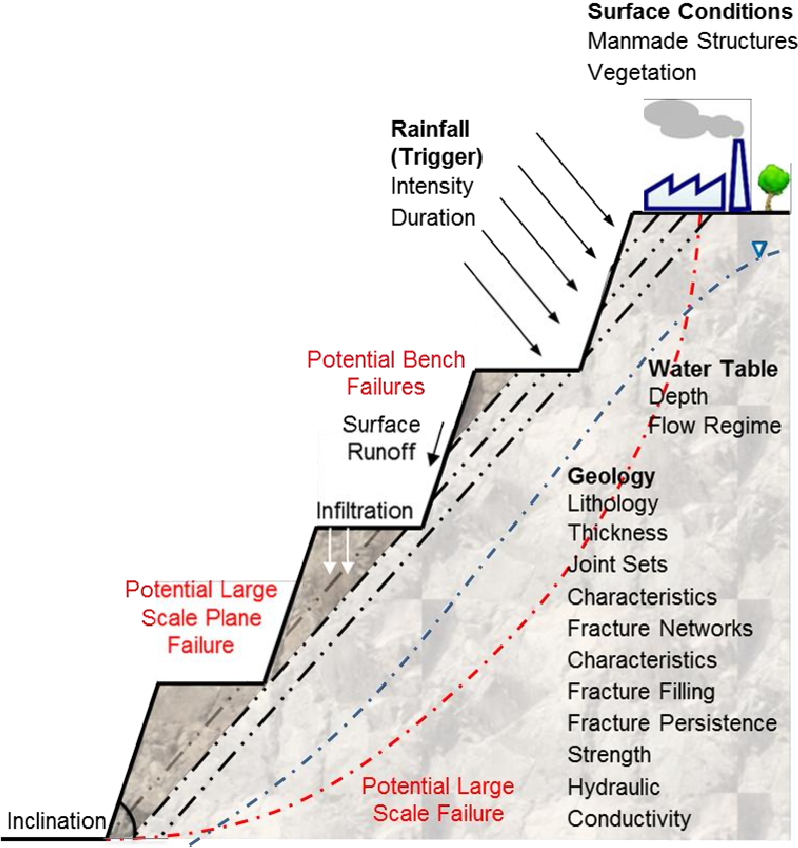
Sumber: google.com
Before any calculation begins, complete data is essential. This data includes:
- Slope Geometry → height, angle, slope length.
- Geology & Discontinuities → rock type, fractures, faults, weak layers.
- Geotechnical Data → results of triaxial, direct shear, and UCS tests to determine cohesion (c) and internal friction angle (φ).
- Hydrogeology → groundwater table position, pore pressure.
- Mining Operations → blasting patterns, haul traffic, pit design changes.
📌 Example: A triaxial test in the laboratory might yield cohesion of 80 kPa and an internal friction angle of 28°. These numbers serve as the main input for calculating the factor of safety.
Factor of Safety (FoS)
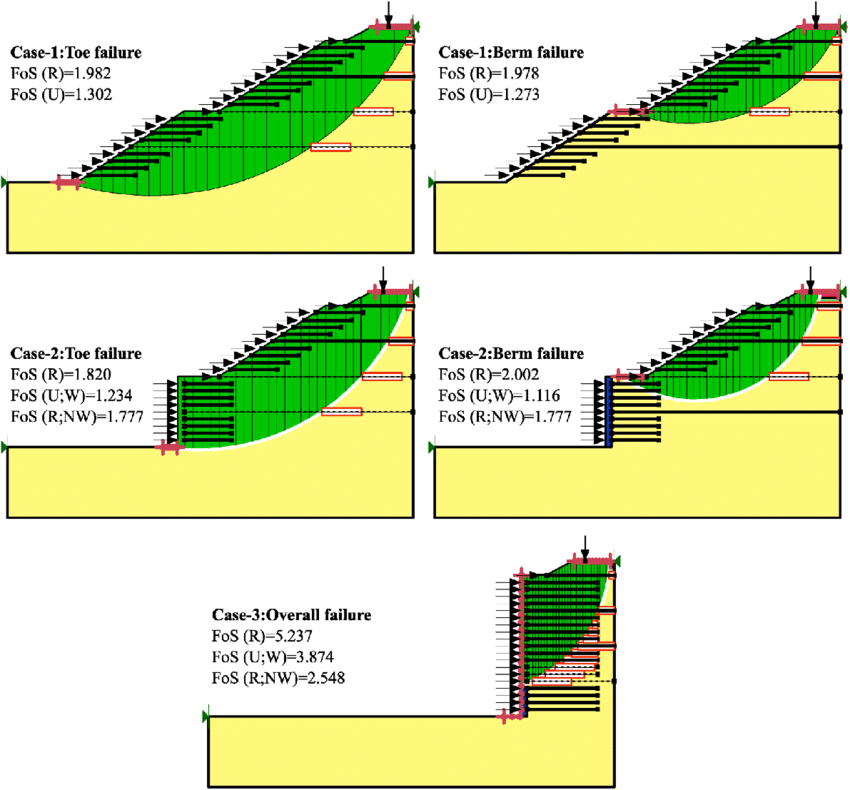
Sumber: google.com
FoS is a quantitative indicator of slope stability:
- FoS > 1.25 → Stable
- 1.07 ≤ FoS ≤ 1.25 → Critical, requires monitoring
- FoS < 1.07 → Unstable, high risk of slope failure
The calculation compares shear strength (resisting forces) with driving forces.
🔎 Simple analogy: Think of car brakes on a downhill road. If the brakes are stronger than gravity, the car stops. If the brakes are weak, the car slides—similar to slope failure.
Slope Stability Analysis Methods
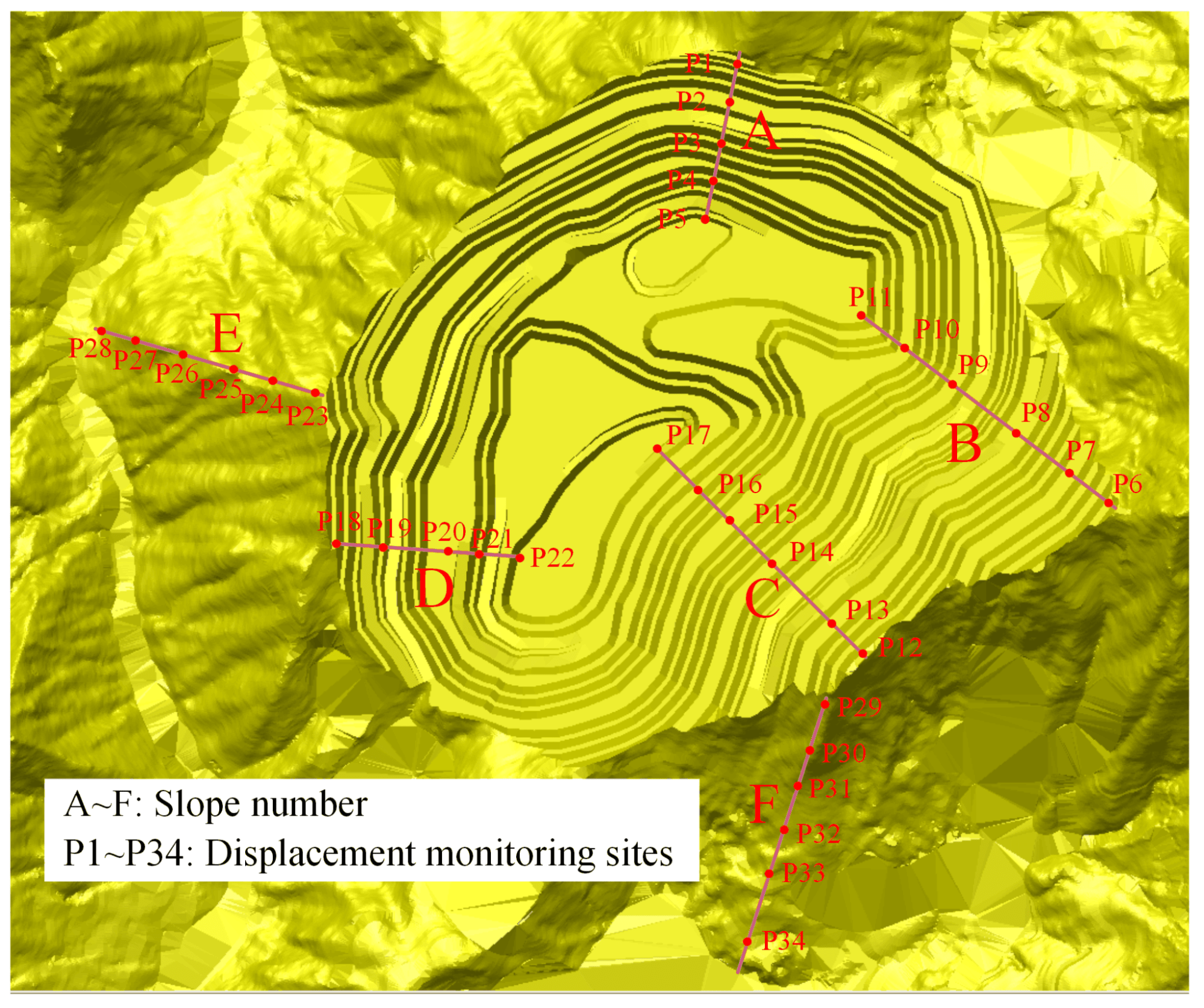
Sumber: google.com
1. Limit Equilibrium Methods (LEM)
- Bishop, Janbu, and Morgenstern-Price methods.
- Divide the slope into slices and calculate force & moment equilibrium.
- Widely used in coal and nickel mining due to speed and efficiency
2. Numerical Modeling
- Finite Element Method (FEM): models stress and strain distribution.
- Finite Difference Method (FDM): suitable for long-term dynamic analysis.
- Discrete Element Method (DEM): analyzes block interactions in fractured rock masses.
3. Probabilistic Analysis
Instead of producing a single FoS value, it calculates the probability of failure based on variations in parameters (cohesion, φ, etc.).
Case Studies in Indonesia
- Coal Mine in Kutai Kartanegara
Initial FoS of the disposal area: 1.108–1.756 → below safe limits.
Recommendation: slope angle 9° + bench height 7 m → FoS improved to 1.301 (safe) - Martabe Gold Mine
Geotechnical monitoring recorded movements of 5 mm/day. Back-analysis revealed actual cohesion was much lower than laboratory values.
Solution: redesigning slope geometry.
Modern Technologies
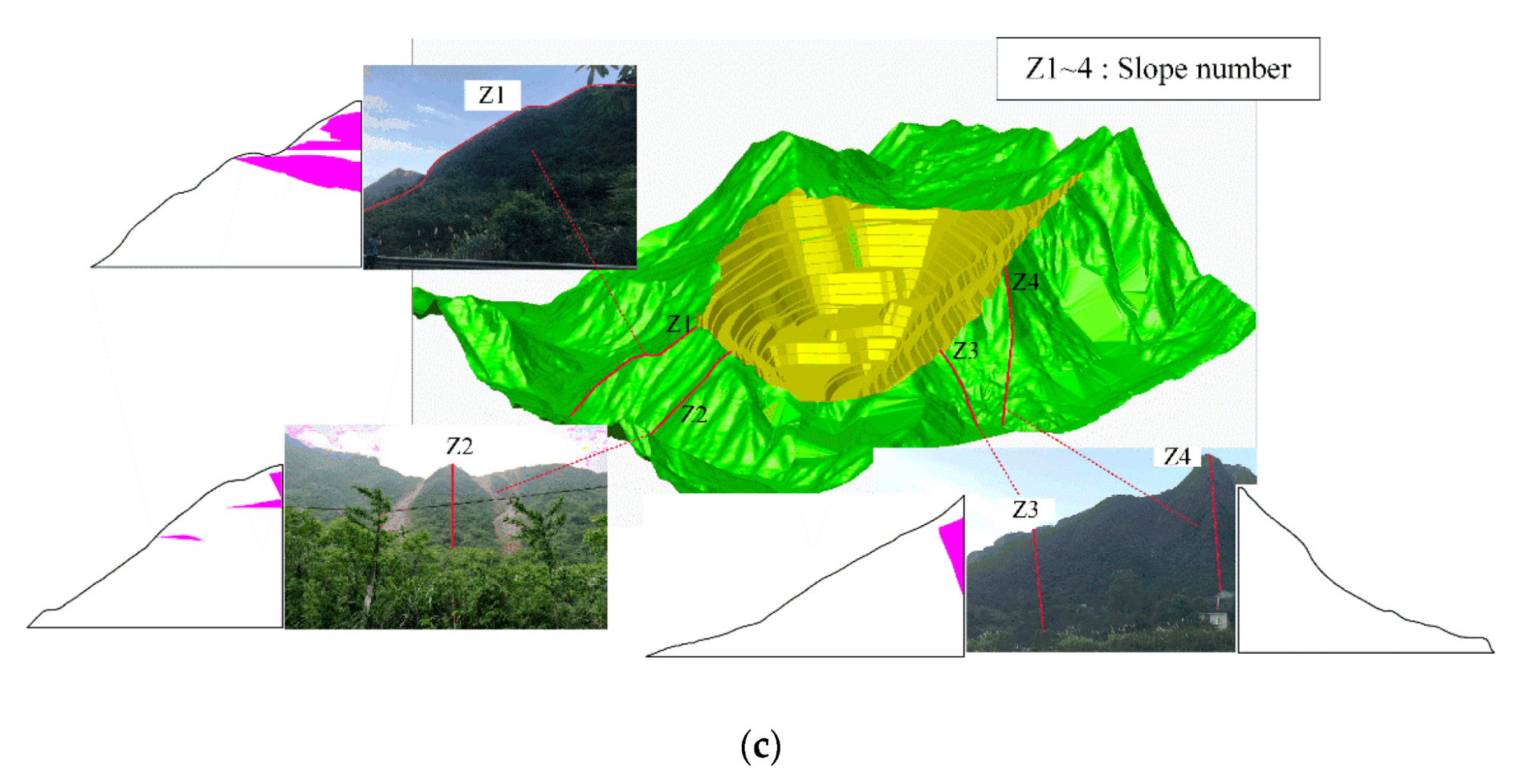
Sumber: google.com
- Drone Photogrammetry & LiDAR: produce accurate 3D slope models.
- Radar Interferometry (InSAR): detects slope movement at millimeter scale.
- Slope Digital Twin: integrates geotechnical data, sensors, and real-time imagery for early prediction.
📌 Example: Research at Shizhuyuan Mine, China, combined FEM with real-time monitoring, enabling identification of at-risk slope zones before failure occurred.
Conclusion
Mine stability is the synergy of robust structural data, accurate analysis methods, and modern monitoring technologies. With this approach, companies can:
✔️ Ensure production continuity
✔️ Reduce material losses
✔️ Protect workers








